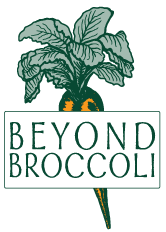As a subscriber to Today’s Dietitian I received a press release recently from Kraft Foods announcing the expansion of their “Wholesome Product Line” of Oscar Mayer Lunchables. According to the article the new varieties include:
Chicken Strips made with 100% white meat chicken and Chicken + American Sub Sandwich which features rotisserie seasoned chicken and bread made with 8g of whole grain. Both products are good sources of protein and calcium and join the Lunchables with water roster introduced last year that offers quality meats, cheeses and spring water. (Lunchables Fact Sheet)
I’d read about this far when I rolled my eyes, annoyed that my subscription to a trade magazine makes me a target for this kind of propaganda. Then I thought I ought to take a closer look at the products before dismissing them completely. Generally speaking, I try to steer clients away from highly processed, packaged foods when possible and stick with a more whole foods approach. However, I also like the mantra “progress not perfection” so I need to know what to tell the client who is very clearly going to buy her kids Lunchables and merely wants to know if these new ones are better than their forebears. So, I read on.
The short answer to this imaginary client question is: yes. However, I discovered the press release doesn’t include the remainder of items in these conveniently packaged meals such as the crispy rice treat or Nilla Wafers and Kool-Aid Fun Fizz Tropical Punch Drink Drop (not sure what those are but without the addition of vitamin C to make parents think it’s a good thing I suspect no one would place them in the “health food” category). But I guess we shouldn’t be so picky, after all we are now getting a water beverage option, 8 grams of whole grain (though this is a tricky spin since we are really concerned about the amount of FIBER not the amount of whole grain…this label claim is typically a marker for a food being hawked as “healthy” that really isn’t), a full serving of fruit, and supposedly better quality chicken in at least two of these offerings – all for $3.49. What’s wrong with that?
(Sigh.) The dilemma I face is that as much as I want to be pragmatic and to work with clients “where they are,” (and I actually do this quite well) it is really difficult for me to embrace foods like Lunchables, even if they have evolved as a slightly better product from a pure nutrient content perspective. It gets back to my own broader nutritional view. The reality is that Lunchables aren’t likely to ever fit a predominantly “whole foods approach” to eating (and I don’t mean the famous upscale grocery chain – just food in its simplest form without a bunch of additives to prolong the time it spends on a shelf) even with the bottle of water and Mandarin oranges.
Kraft Foods is merely responding to a vocal part of the market clamoring for healthier, yet convenient foods to feed kids. They are in the business of selling food and we want cheap food that we don’t have to spend much time preparing. (Yes, I know that the simple, whole foods I promote can be easily and inexpensively prepared at home, but this requires time and skills, whether it’s nutritious or not, and in case you haven’t noticed, Home Economics is a dying art – if not already dead.) But here’s the thing, if we want convenient and cheap food (and it’s clear we do) then we will not shed the lengthy ingredient lists of foods like Lunchables any time soon.
Though the improvements to Lunchables don’t satisfy those of us yearning for short, easy-to-decipher ingredient lists using only stuff we’d find in a home kitchen, and there is probably still plenty of added salt, sugar and fat to entice the kiddos to chomp these down and beg for more, these latest changes do represent progress. Manufacturers like Kraft are making efforts to offer foods lower in sodium, fat and calories and ultimately this is a good thing. I view foods like microwavable meals and Lunchables as symptoms of larger cultural issues related to food – it’s production, distribution, how we view it, how we eat it, and the importance we attach to it. Ultimately what I’d like to see amounts to a cultural revolution and such a thing isn’t likely to come about from anything industry initiates…after all, the food industry is driven by us (at least in part).
So what’s a dietitian interested in a more “whole foods approach” to eating to do?
“Be the change you want to see in the world.” – Mahatma Ghandi
I cook and I teach others who want to cook. I minimize the highly processed and packaged foods I buy and eat, and I encourage others to do the same, but I’m not a zealot about it. Not everyone is ready for a major overhaul of their eating (whether they need it or not). I can help most by being knowledgeable, compassionate, and realistic – and hopefully, a good role model. I don’t think I need to embrace products like yuppified Lunchables, but I do need to recognize that the changes I want to see aren’t likely to happen quickly. I must adhere to my mantra and accept progress without perfection, at least for the moment.


